
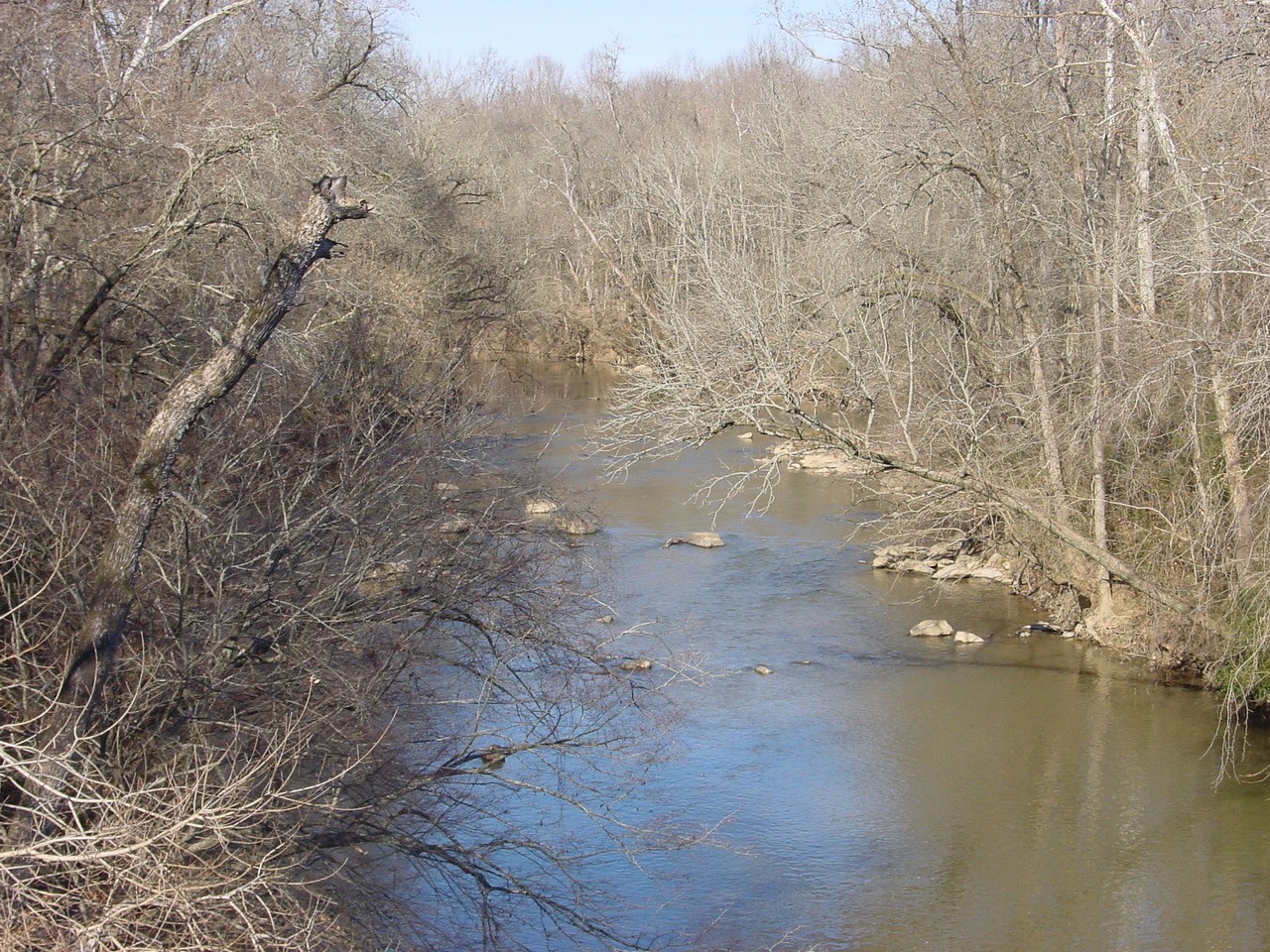
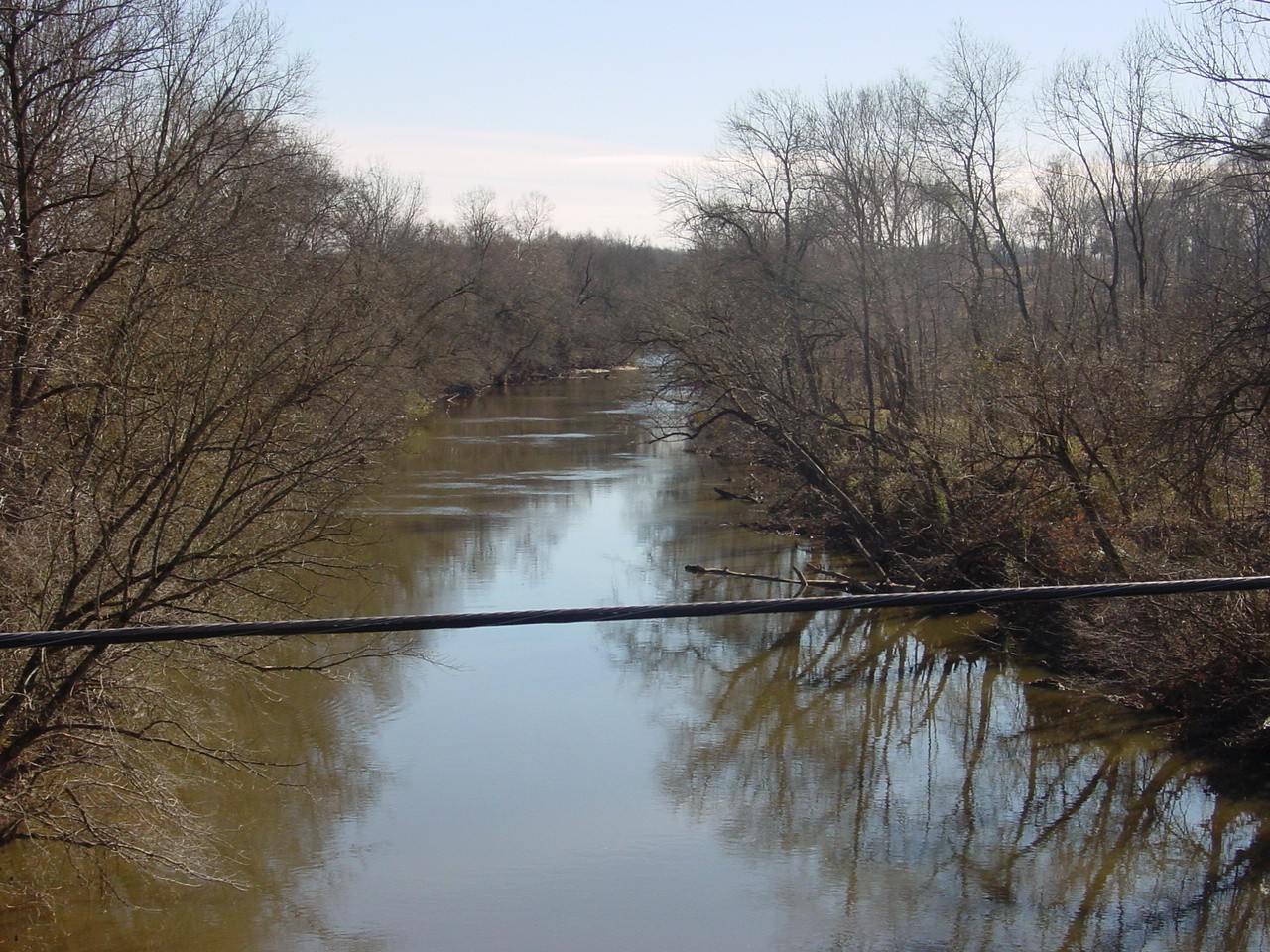
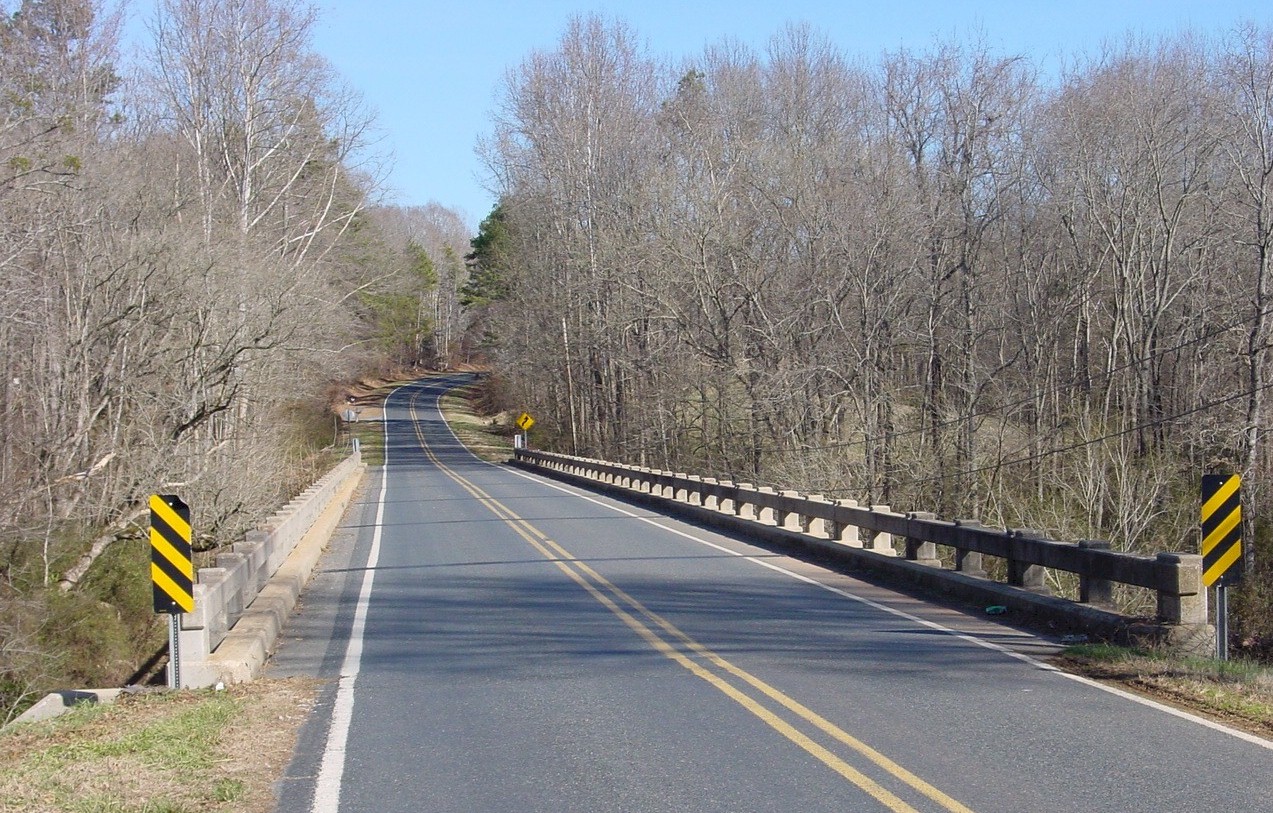
About 100 yards south of the ford. Site of the first iron bridge in Randolph County, ca. 1880.
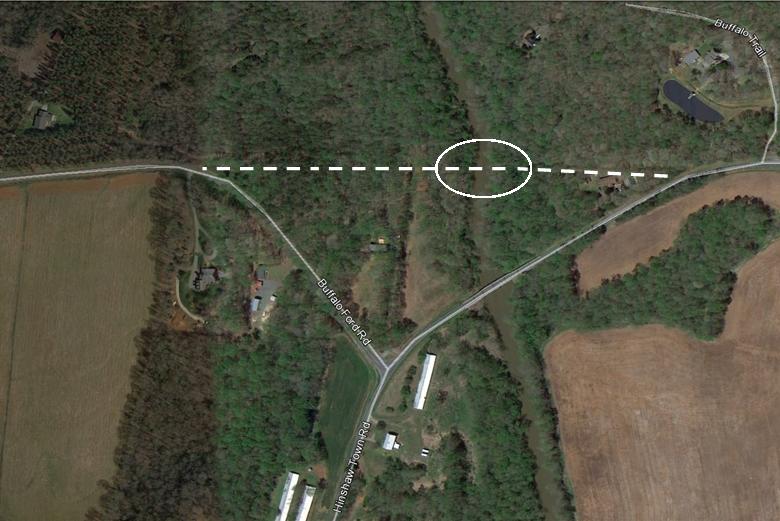
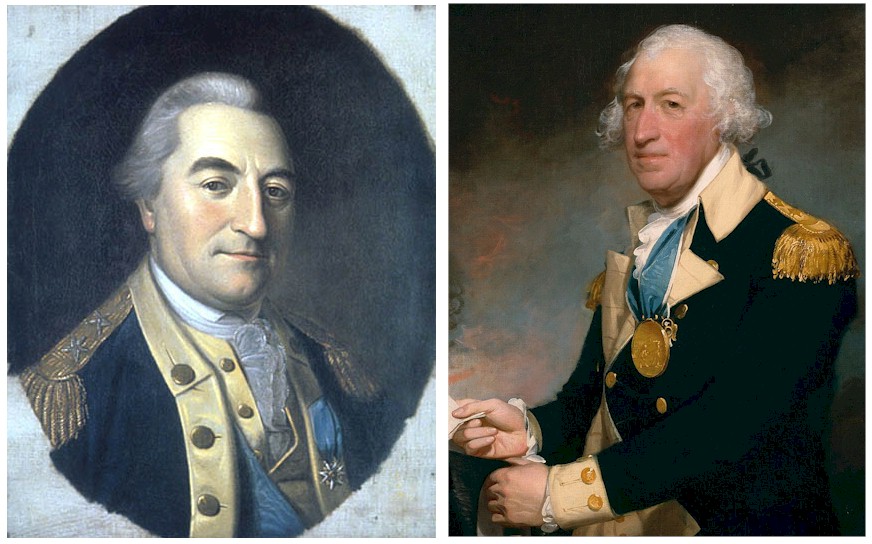
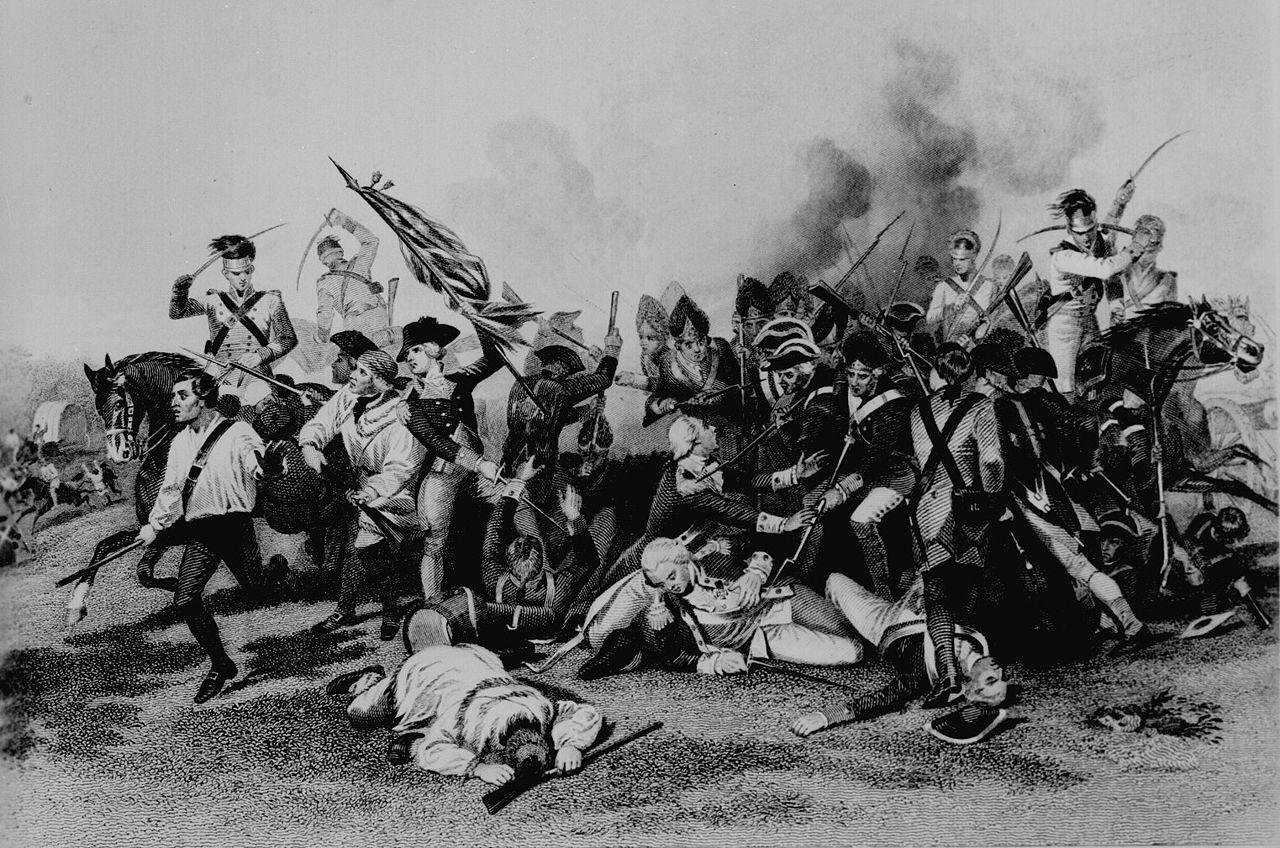
de Kalb was mortally wounded during the battle.
Read the Cultural Heritage Site designation report
Read the Cultural Heritage Site resolution
Buffalo Ford, on the Deep River between Ramseur and Coleridge, was a very early site where the east-west road from Salisbury to Cross Creek (Fayetteville) and Wilmington crossed the north-south road from Hillsborough to Camden, South Carolina. It has been a crossing place since pre-historical times; it gained its name when native Americans observed buffalo crossing the river at its location. It was a colonial ford, and the site of a covered bridge before the Civil War. It also was the location of the county’s first iron and steel bridge in the 1880s. Those early bridges were washed away by floods and the existing bridge built in 1956. The western end of the ford is at the site of early bridge abutments, but the exact location of the eastern end is unknown.
During the American Revolution, Buffalo Ford was the rendezvous and camp site for the Continental Army of the Southern Department under Baron Johann DeKalb in the summer of 1780, while it waited for the arrival of General Horatio Gates, sent by the Continental Congress to lead the army in an invasion of South Carolina. DeKalb was killed in the subsequent Battle of Camden and Gates was disgraced, leading to the army being placed under the command of General Nathanael Greene. The ford also was the nucleus of heavy partisan activity during the war, especially involving Tory Col. David Fanning.
Related Sites:
Col. Andrew Balfour Cemetery
Faith Rock
Harmon Cox Mill
Searcy's Ford/Ferry; Waddell's Ferry; Waddell Cemetery